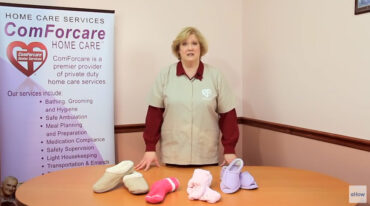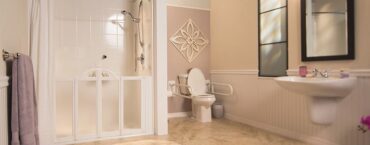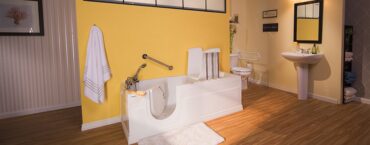
Understanding the Unique Safety Needs of Seniors
As seniors age, their safety needs may change. It is important to understand and address these unique needs to create a secure living environment. One of the primary concerns for seniors is the risk of falls. Older adults are more susceptible to falls due to factors such as reduced balance, muscle weakness, and vision problems. Therefore, it is crucial to take measures to prevent falls by removing tripping hazards, installing grab bars in bathrooms, and ensuring proper lighting throughout the home.
Another safety concern for seniors is the risk of accidents in the kitchen. Cooking can become challenging for older adults, especially those with mobility or cognitive issues. It is important to ensure that the kitchen is equipped with safety features such as easy-to-use appliances, non-slip flooring, and accessible storage. Additionally, it is advisable to implement strategies to prevent burns and scalds, such as using stove guards and setting hot water heaters at a safe temperature.
Implementing Physical Safety Measures in the Home
Creating a safe living environment for seniors involves implementing physical safety measures throughout the home. One important aspect is ensuring adequate lighting in all areas, especially hallways, staircases, and entrances. Well-lit spaces reduce the risk of trips and falls, as they allow seniors to see potential hazards more easily. Installing handrails along staircases and in bathrooms can provide additional support and stability.
Another essential safety measure is securing the home against potential intruders. This can be done by installing deadbolt locks on doors and windows, as well as a security system. It is also recommended to trim shrubs and trees near windows and entrances to eliminate potential hiding spots for burglars. Additionally, seniors should be encouraged to check the identification of any unfamiliar individuals before allowing them into their home.
Utilizing Technology for Enhanced Security
Technology can play a significant role in enhancing the security of senior living environments. One useful tool is a personal emergency response system (PERS), which allows seniors to call for help in case of an emergency. These systems typically consist of a wearable device, such as a pendant or wristband, that can be easily activated to alert a monitoring center. PERS can provide peace of mind for both seniors and their loved ones.
Another technology that can enhance security is a video surveillance system. Installing cameras in strategic locations, such as entrances and common areas, can deter potential intruders and provide valuable evidence in case of a security incident. Seniors can also benefit from smart home devices, such as doorbell cameras and motion sensors, that can alert them to any suspicious activity.
Promoting Social and Emotional Well-being
Creating a secure environment for seniors goes beyond physical safety measures. It is equally important to promote their social and emotional well-being. Loneliness and isolation can have a negative impact on seniors’ mental health and overall quality of life. Encouraging social interactions and connections is essential.
One way to promote social well-being is to encourage seniors to participate in community activities and events. This can include joining clubs, attending senior centers, or volunteering for local organizations. Additionally, technology can be a valuable tool for staying connected with loved ones. Teaching seniors how to use video calling platforms or social media can help them stay in touch with family and friends, even if they are physically apart.
Ensuring Emergency Preparedness
Being prepared for emergencies is crucial in creating a secure environment for seniors. Seniors may be more vulnerable during natural disasters or other emergencies, so it is important to have a plan in place. This includes creating an emergency kit with essential supplies, such as food, water, medications, and important documents.
In addition to physical preparations, it is important to establish communication channels in case of an emergency. Seniors should have access to a reliable method of communication, such as a cell phone or a landline, to call for help or receive updates. It is also advisable to have a designated emergency contact who can assist in coordinating assistance if needed.





